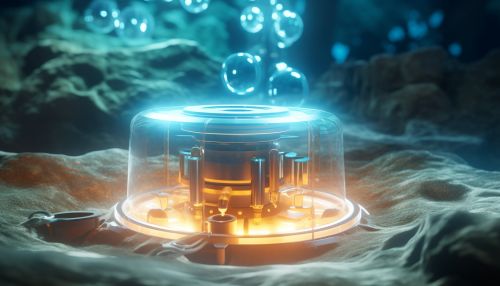Mechanisms of Light-Driven Ion Pumps in Archaea
Introduction
Light-driven ion pumps are a class of proteins that are capable of harnessing the energy from light to pump ions across a membrane. These proteins are found in a variety of organisms, but are particularly prevalent in the domain of Archaea. The mechanisms of these light-driven ion pumps in Archaea are complex and involve a number of steps and components. This article will delve into the details of these mechanisms, providing a comprehensive and detailed overview of this fascinating biological process.


Structure of Light-Driven Ion Pumps
Light-driven ion pumps in Archaea are typically composed of a single protein subunit that spans the membrane multiple times. The protein is embedded in the membrane, with parts of it extending into both the interior and exterior of the cell. The structure of the protein is crucial to its function, as it allows it to capture light energy and use it to move ions across the membrane.
The protein subunit is composed of several alpha helices, which are common structural elements in proteins. These alpha helices span the membrane and provide a path for ions to move through. The exact number and arrangement of these helices can vary between different types of light-driven ion pumps, but they all serve the same basic function.
Within the protein subunit, there is a special molecule known as a chromophore. This molecule is responsible for absorbing light energy. In most light-driven ion pumps in Archaea, the chromophore is a type of molecule known as retinal. When retinal absorbs light, it undergoes a change in shape. This change in shape triggers a series of events within the protein that ultimately lead to the pumping of ions.
Mechanism of Ion Pumping
The mechanism of ion pumping in light-driven ion pumps involves several steps. The first step is the absorption of light by the chromophore. When light hits the chromophore, it causes the molecule to change shape. This change in shape is known as photoisomerization, and it is the key event that triggers the rest of the ion pumping process.
Following photoisomerization, the shape change in the chromophore causes a shift in the position of the alpha helices within the protein. This shift creates a pathway for ions to move through the protein and across the membrane. The specific ions that are pumped can vary depending on the type of light-driven ion pump. Some pumps move protons, while others move sodium or chloride ions.
Once the pathway for ions is open, the ions move down their electrochemical gradient. This means that they move from an area of high concentration to an area of low concentration. This movement of ions across the membrane is what creates an electrochemical potential difference, or voltage, across the membrane.
The final step in the process is the return of the chromophore and the protein to their original states. This is known as the recovery phase, and it is necessary for the pump to be able to function again. The recovery phase is typically slower than the other steps in the process, and it can limit the overall rate of ion pumping.
Role in Archaea
In Archaea, light-driven ion pumps play a crucial role in energy production. The voltage created by the movement of ions across the membrane can be used to drive the synthesis of ATP, the main energy currency of the cell. This process is known as photophosphorylation, and it is one of the main ways that Archaea are able to harness the energy from light.
In addition to their role in energy production, light-driven ion pumps in Archaea can also play a role in sensing and responding to light. Some Archaea are capable of moving towards or away from light, a behavior known as phototaxis. Light-driven ion pumps can contribute to this behavior by helping to sense the direction and intensity of light.
